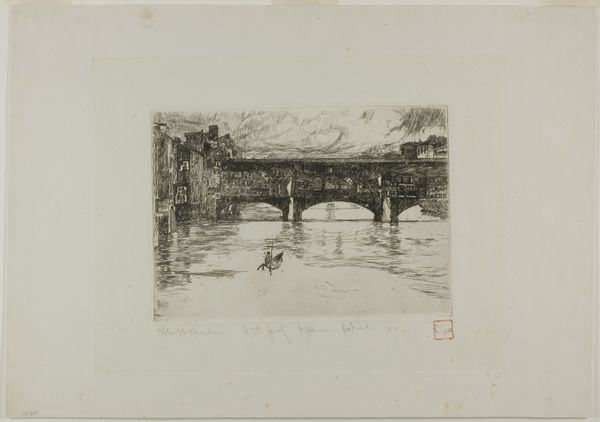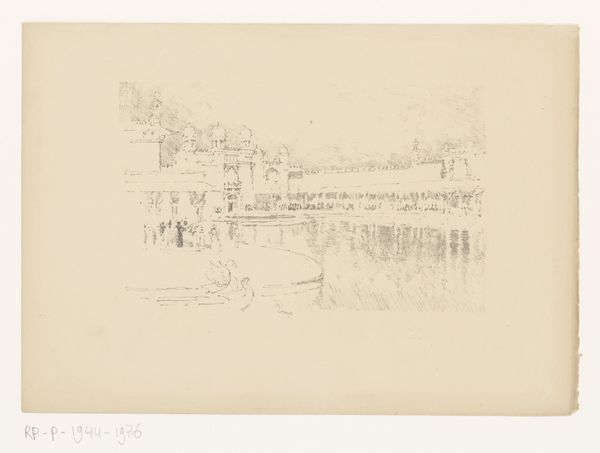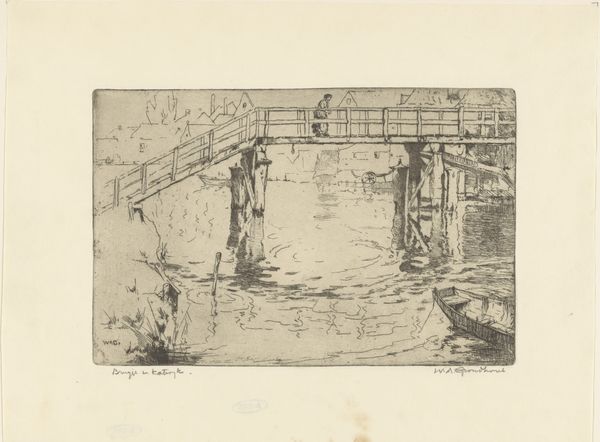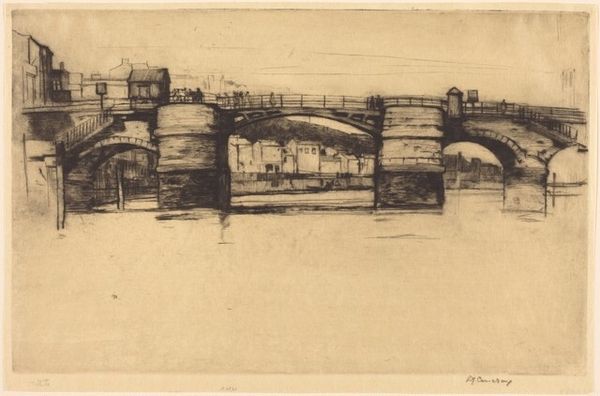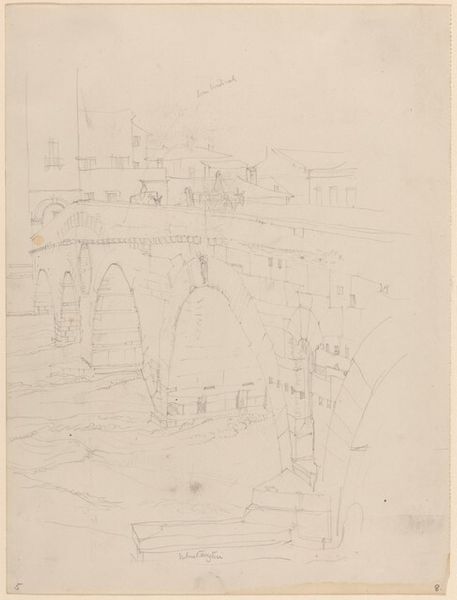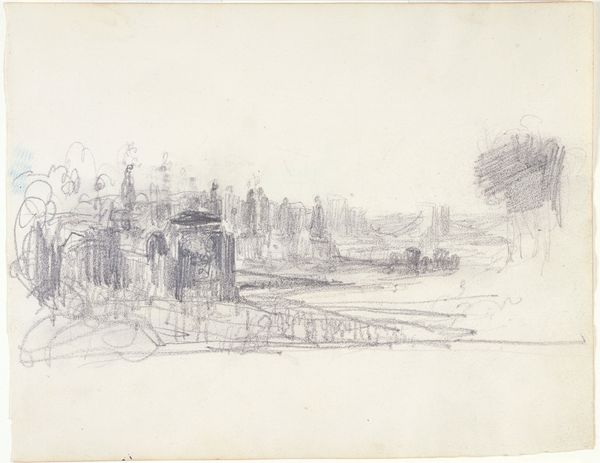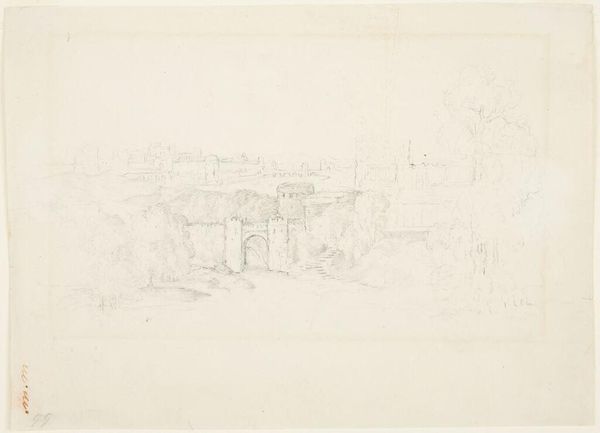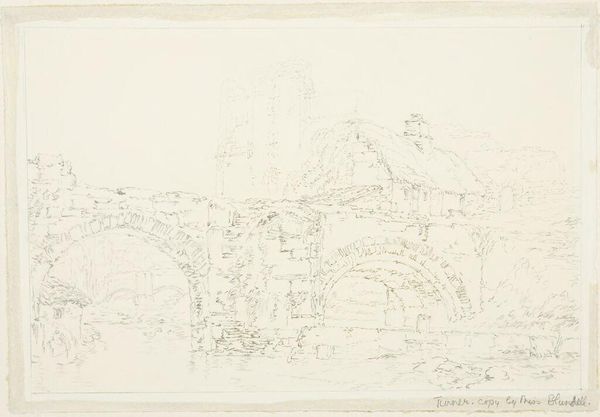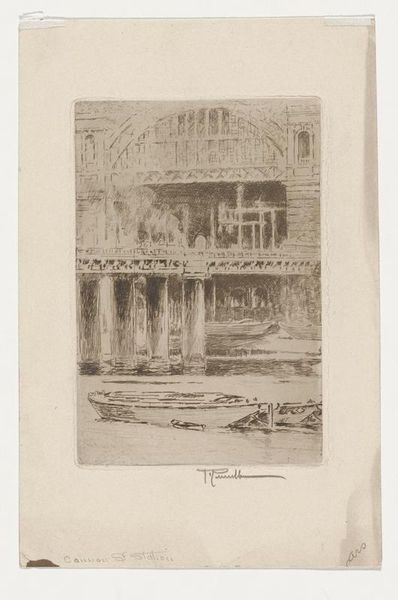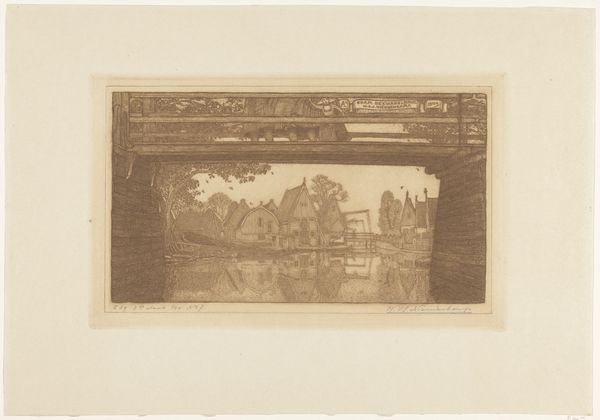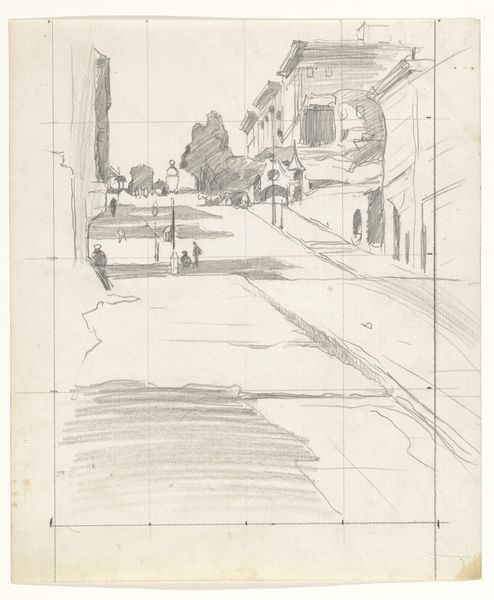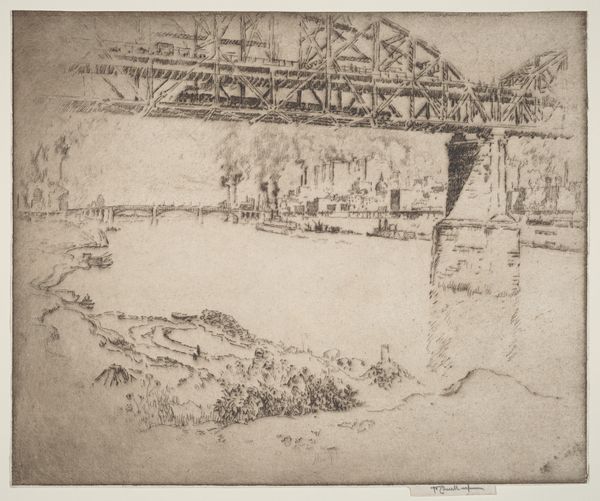
Dimensions: chine collé: 20.8 x 34.6 cm (8 3/16 x 13 5/8 in.)
Copyright: CC0 1.0
Curator: This is James McNeill Whistler's "Old Battersea Bridge," a chine collé print now residing at the Harvard Art Museums. It's a study in understated elegance, don't you think? Editor: Yes, it has a ghostly, almost dreamlike quality. The bridge itself seems to emerge hesitantly from the water. I am particularly struck by how the bridge subtly alludes to the rise of industrial London and its impact on working-class communities. Curator: Absolutely. It showcases Whistler's interest in printmaking and the textures he could achieve with different papers. The process itself, the delicate layering, speaks to the artist's hand and labor. How the bridge also served as a key artery for the city workers of London during the era. Editor: I wonder, too, about the figures on the bridge. Are they simply passersby, or do they represent a broader societal narrative about movement, class, and the changing urban landscape of the late 19th century? Perhaps Whistler used this bridge to subtly capture the effects of capitalism on the everyday lives of Londoners. Curator: That’s a compelling point. I've always been fascinated by how Whistler elevates such commonplace subjects, transforming industrial infrastructure into something poetic through labor-intensive techniques. Editor: Agreed. It serves as a reminder to contemplate the social and political layers embedded within seemingly simple compositions, particularly how societal divides can be both reinforced and traversed through spaces like this bridge. Curator: A productive way to engage with Whistler's print. Editor: I appreciate how you’ve highlighted the importance of process and labor in understanding this work.
Comments
No comments
Be the first to comment and join the conversation on the ultimate creative platform.
